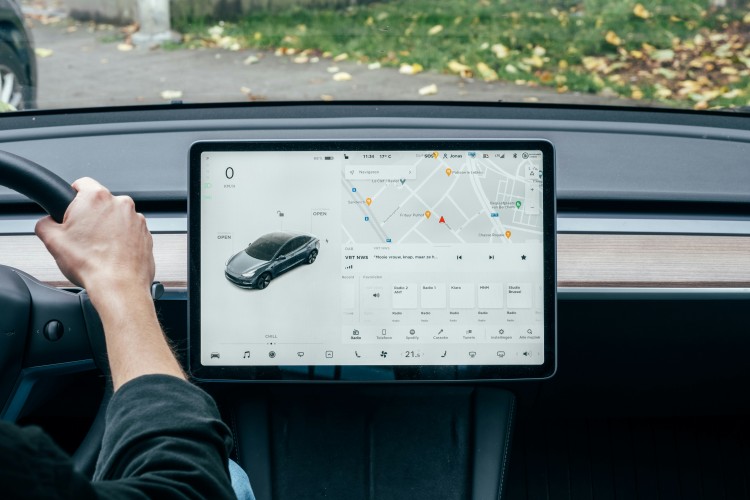Protect Your EV Battery The Right Way

A ton of misinformation exists about the hottest battery chemistry in the electric car world: lithium iron phosphate, or LFP (the "F" is silent). The electric car market mainly uses nickel manganese cobalt (NMC) batteries. However, LFP batteries are expected to take over by 2028. This change is coming soon.
Best Ways to Extend Your Electric Car's Battery Life
From a consumer's view, a common question is, "What are the best ways to make my electric car's battery last longer?" The answer to this question changes depending on the chemistry of your battery.
We’ve already covered best practices for NMC chemistries in another guide, which is definitely worth checking out. In this article, however, we’re focusing on LFP batteries. There exists an abundance of conflicting information out there.
Understanding Capacity Loss in LFP Batteries
A new study explains how and why these batteries lose capacity over time. This leads to useful best practices. You may find these surprising, considering what car manufacturers say you should do.
So, let’s dive in and explore the best practices for maximizing the longevity of LFP batteries in electric vehicles. Are you prepared to guarantee the longevity of your EV’s battery?
To truly maximize the longevity of Lithium Iron Phosphate (LFP) batteries, it's crucial to understand their underlying chemistry. LFP batteries use lithium iron phosphate for the cathode. They have graphite for the anode and a lithium salt in an organic solvent as the electrolyte. This composition gives LFP batteries several unique characteristics that set them apart from other types of lithium-ion batteries, such as Nickel Manganese Cobalt (NMC).
One of the most significant differences between LFP and NMC batteries is their voltage curves. LFP batteries have a notably flatter voltage curve compared to NMC batteries. However, what does this imply for you?
Essentially, this flatter curve makes it more challenging to accurately estimate the state-of-charge (SOC) of the battery. As the battery runs low, NMC batteries show a sharper drop in voltage. This helps us see how much charge is left.
In contrast, the voltage in an LFP battery stays fairly constant until the battery is almost empty. This makes estimating the state of charge trickier.
Importance of Accurate SOC Estimation
Why does this matter? Accurate SOC estimation is vital for both the performance and longevity of your battery. If you do not estimate the SOC correctly, you might overcharge or undercharge your battery. This can cause it to wear out faster.
So, what’s our approach to this? One effective method is to periodically charge your LFP battery to 100%. This helps recalibrate the battery management system (BMS), ensuring it provides accurate SOC readings. However, you should balance this with the need to avoid keeping the battery at 100% for too long. High voltage can speed up battery wear.
Understanding Chemical Reactions
In addition to voltage management, understanding the chemical reactions within the battery is essential. Over time, the lithium ions move between the anode and cathode during charge and discharge cycles. This movement can lead to a gradual loss of lithium inventory, reducing the battery’s capacity.
Factors such as high temperatures and high SOC can accelerate these chemical reactions, further contributing to degradation. For more information on battery chemistry, check out this resource.
In summary, the key to making your LFP battery last longer is to understand its special chemistry. You also need to manage its voltage and temperature well. This way, you can keep your electric vehicle's battery in great condition for a long time.
Ready to dive deeper into the best practices for maintaining your LFP battery? Click here for further information.
Ready to dive deeper into best practices for daily use of Lithium Iron Phosphate (LFP) batteries? Keep reading to learn how to ensure your battery stands the test of time!

1. Understanding Daily Charging Habits
To get the most out of LFP batteries in electric vehicles, follow these key practices. Understanding these practices is crucial, especially given the conflicting information that often surrounds battery maintenance.
Charge Periodically to 100%
One of the most important practices is to periodically charge your LFP battery to 100%. This might seem counterintuitive given the general advice to avoid high states of charge, but there's a good reason for it.
LFP batteries have a flatter voltage curve than other types, making it hard to estimate the state-of-charge (SOC) accurately. By charging to 100% at least once a month, you help reset the Battery Management System (BMS), ensuring it gives accurate SOC readings. This is crucial for both performance and longevity.
Maintain an Optimal SOC
For regular daily use, experts generally recommend keeping the SOC between 70-80%. This range strikes a balance between maintaining enough charge for daily needs and minimizing stress on the battery. Charging to 100% every day can speed up battery wear due to increased chemical reactions. Keeping your SOC in the 70-80% range reduces the risk of these reactions, extending the battery's lifespan.
Frequency and Size of Charge Cycles
Another aspect to consider is the frequency and size of charge cycles. Frequent small charge cycles can be either harmful or beneficial depending on the battery chemistry. For LFP batteries, it's best to avoid frequent small charges, especially if they keep the battery at a high SOC. Allowing the battery to discharge to a lower level before recharging can be more beneficial, reducing the number of full charge cycles and minimizing wear and tear.
Temperature Management
Temperature plays a significant role in the health of your LFP battery. High temperatures can accelerate degradation, while extremely low temperatures can reduce efficiency. Ideally, aim to charge and discharge your battery within a moderate temperature range. Avoid charging immediately after a lengthy journey when it's warm, and also avoid charging in extremely cold conditions.
2. Practical Tips for Daily Use
- Charge to 100% Periodically: Aim to charge your battery to 100% at least once a month to recalibrate the BMS.
- Maintain a Moderate SOC: For daily use, keep your SOC between 70-80% to minimize stress on the battery.
- Avoid Frequent Small Charges: Allow the battery to discharge to a lower level before recharging to reduce the number of full charge cycles.
- Manage Temperature: Charge and discharge your battery within a moderate temperature range to avoid accelerated degradation.
By following these best practices, you can ensure that your LFP battery remains in optimal condition for as long as possible.
3. Long-Term Storage and Temperature Management for LFP Batteries
When it comes to extending the lifespan of LFP batteries, long-term storage and temperature management play pivotal roles. How you store your electric vehicle (EV) when it’s not in use can significantly impact the health and longevity of its battery.
Maintain an Appropriate SOC During Storage
First and foremost, maintaining an appropriate SOC during storage is crucial. Ford recommends keeping the SOC at approximately 50% when storing your vehicle for an extended period. This minimizes the chemical reactions that can occur at higher voltages, slowing battery degradation.
Temperature Considerations
Both high and low temperatures can have detrimental effects. High temperatures can accelerate chemical reactions within the battery, while extremely low temperatures can reduce efficiency and cause permanent damage. Aim to store your EV in a controlled environment, ideally within the range of 10°C to 25°C (50°F to 77°F).
4. Practical Tips for Long-Term Storage
- Maintain a 50% SOC: As recommended by Ford, keep your battery at around 50% charge during long-term storage.
- Temperature Control: Store your vehicle in a location where the temperature is consistently within the 10°C to 25°C range.
- Humidity Control: Store your vehicle in a dry environment to prevent moisture-related issues.
- Periodic Checks: Regularly check the SOC and overall condition of your battery to address any potential issues early.
By following these practices, you can significantly extend the life of your LFP battery during periods of inactivity.
5. Charging and Discharging Rates Impact on Battery Health
Understanding the impact of charging and discharging rates is crucial for the health and longevity of LFP batteries in electric vehicles.
Avoid High SOC and Moderate Charging Rates
High charging and discharging rates can accelerate battery degradation due to increased temperature and stress on the battery cells. A study by Jeff Dahn’s lab found that cycling LFP batteries near the top of their charge (75-100% SOC) is detrimental. Time spent cycling at high SOC is critical to minimize.
Optimal SOC for Minimizing Degradation
Operating LFP batteries at lower SOC ranges can significantly extend their lifespan. For instance, cycling between 0-60% SOC was found to be less degrading than 75-100% SOC. Aim to keep your battery’s SOC within a moderate range, ideally between 20-80%.
6. Practical Tips for Charging and Discharging
- Avoid Frequent High SOC: Keep your battery at a high state of charge (above 80%) for extended periods.
- Moderate Charging Rates: Use moderate charging rates whenever possible. Fast charging should be reserved for emergencies.
- Temperature Management: Avoid charging or discharging your battery at extreme temperatures.
- Partial Charging Cycles: Charge up to 80% and discharge down to 20% to reduce stress on the battery.
- Periodic Full Charges: Occasionally charging to 100% helps recalibrate the BMS and ensures accurate SOC readings.
By following these best practices, you can balance convenience and battery health.
7. Tailoring Battery Maintenance to Your Needs
Maximizing the longevity of LFP batteries involves considering the unique needs of different EV users. Here’s how to adapt your charging habits based on usage:
- Daily Commuters: Keep SOC between 70-80% for a balance of daily needs and battery health.
- Long-Distance Travelers: Charge to 100% to maximize range, but balance with practices to minimize battery stress.
- Infrequent Drivers: Maintain the battery during inactivity to prevent degradation.
- Lack of Home Charging: Maintain battery health with accessible charging options.
In conclusion, adjusting your battery maintenance to fit your needs is essential for extending the life of your LFP battery. By following these guidelines, you can ensure your electric vehicle's battery stands the test of time, providing reliable performance for years to come. Thank you for reading, and here's to a long-lasting, efficient EV experience!

